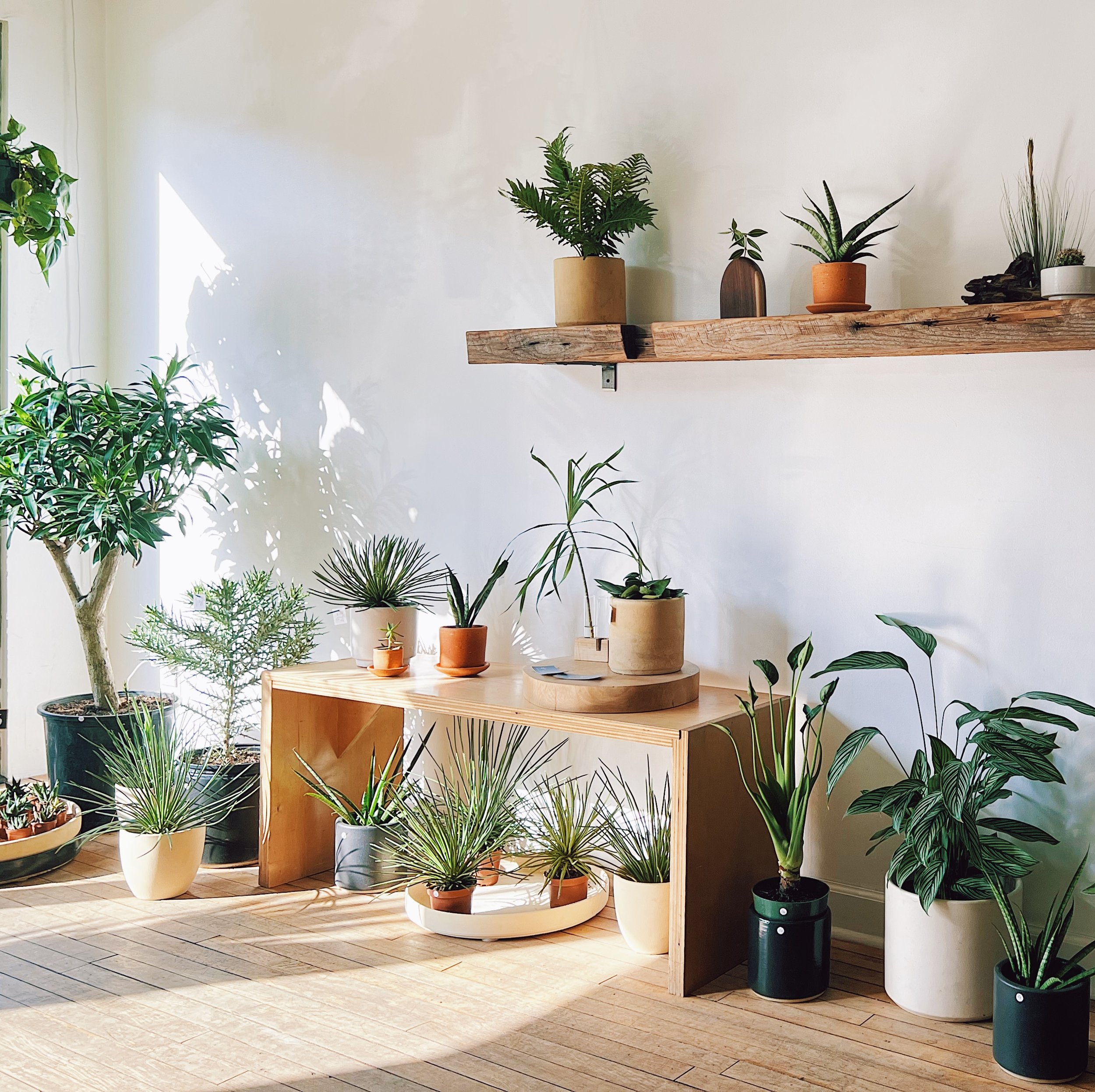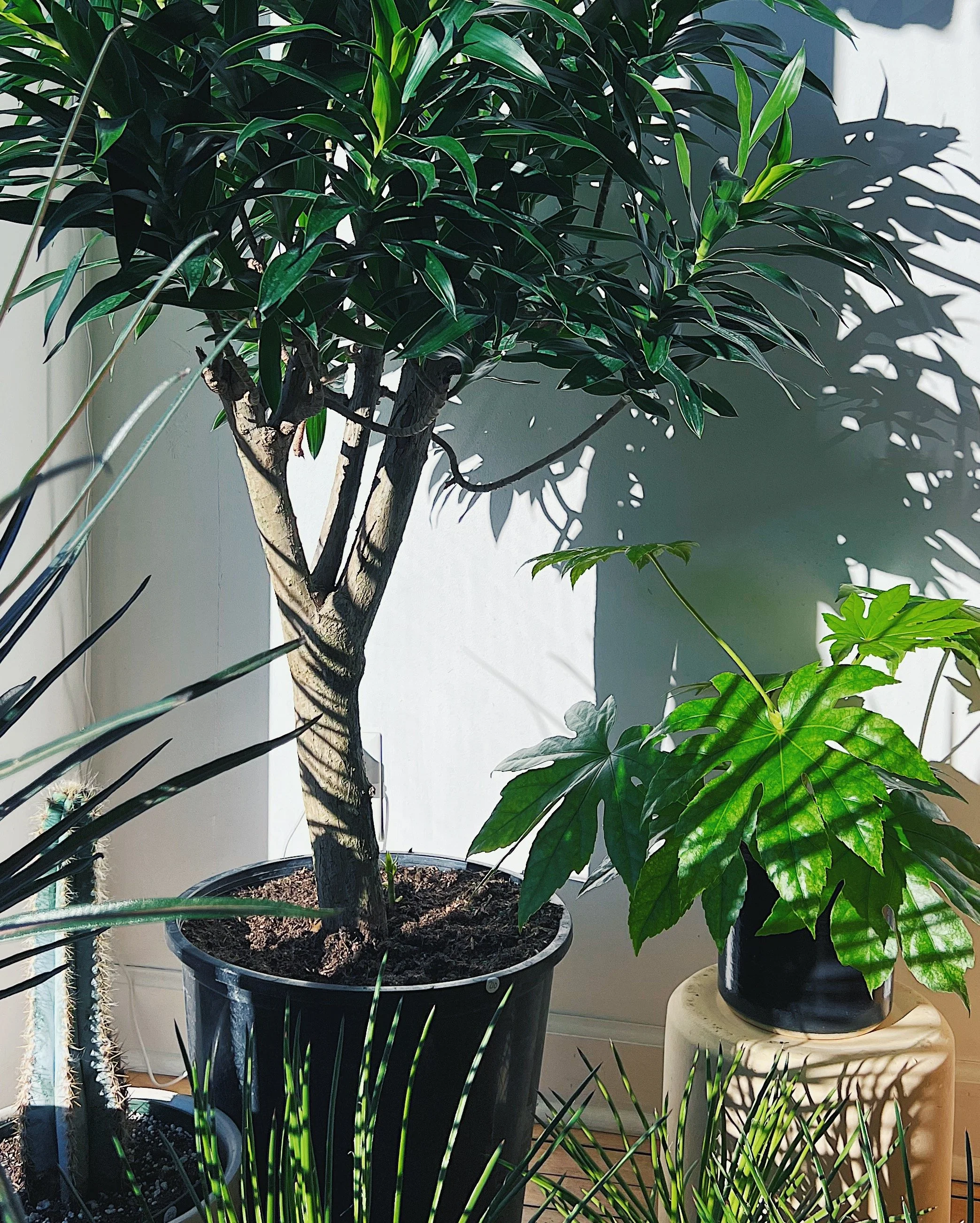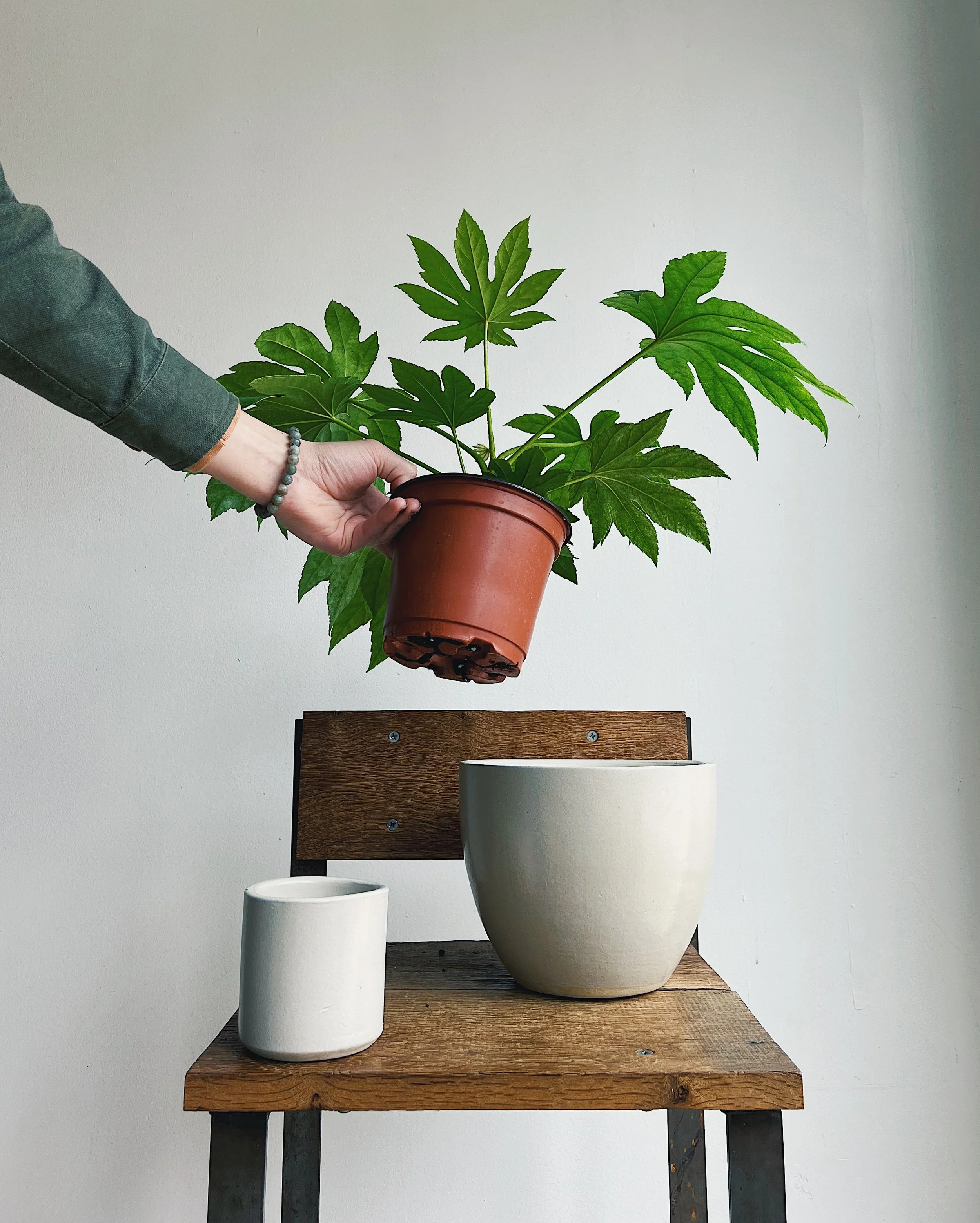Navigating the Jungle: Our Top 5 Tips for Venturing Through Plant Shops and Garden Centers
Entering a garden center or speciality plant shop, you come face-to-face with a veritable amount of plants. While inviting and pleasant to look at, the number of options can quickly become overwhelming if you aren’t familiar with the types of plants and wares offered. With each plant-buying experience being unique to that store or garden center, it’s helpful to know where to start. Read on to find out some of our best tips for navigating buying indoor plants and wares.
Layout of Plants
When shopping for plants—particularly in indoor plant shops—the layout of the plants will typically inform you of their light needs. Consider different factors, such as how far back the plants are pulled away from windows, what directions the windows are facing, along with where beams of sunlight reach into the space. Typically with indoor plant shops (and at STUMP), employees will want to give you an idea of where plants could succeed in your space and will curate the layout of their plants to reflect that.
Plant nurseries aren’t too different, either. Shade houses will be a little bit darker than greenhouses and will typically house more leafy plants (think ferns, Philodendrons, Monsteras, and other thinner-leaved plants), while greenhouses will be a bit more hot and let more sunlight in, housing plants such as succulents, cacti, and other sun-loving plants.
Most plant shops will organize their plants by the amount of natural sunlight they might need, giving you an idea of where they might fare well in your space.
Know Your Game Plan
Knowing your space and what kind of light it receives is half the battle of finding a plant that is right for you. Considering key factors, such as where you’re thinking of placing a plant in relation to your available windows, what direction those windows face, and what intensity of sunlight seeps into your space throughout the course of a day, is essential when plant shopping.
Bringing in photos of your space is helpful not only for you to visualize, but also for the individual helping you find a plant match for that space. Knowing these factors will make selecting a plant that can succeed and thrive in your space all the more possible. With these photos in tow, our shopkeepers at STUMP will be able to assist you and walk you around our shops to find the best plant for you.
Take Your Time
Maybe you have an idea of what you’re looking for, or maybe you’re taking a look around to see what sparks interest—either way, slowing down and perusing the selection of plants and wares available to you can lead you to discover something you may have initially passed over. Maybe you didn’t notice the architectural form of that Sansevieria or the wispy and whimsical foliage of that Ficus ‘Daniella’ initially, but at second glance, they’ve pulled you in. Plants have a peculiar way of catching our attention and speaking to us, and it’s often more rewarding to take your time and find the ones that do so—it’ll make you love them more for it!
While selecting plants, look for ones with signs of healthy, new(er) growth on them—typically, when plants are stressed out or not doing well, the new growth is always one of the first places where they will be communicating their stress to us. That being said, not all plants will be actively pushing out new growth all the time. In this case, look for plants that appear perky with minimal leaf damage, and—as we mentioned above—let them speak to you and guide you along in your selection. At STUMP, we take the time with our new plant arrivals to inspect and treat plants for pests or other signs of damage to ensure the plant you come home with is the healthiest it can be.
Taking the time to notice the distinct features of plants may make you circle back to one you would have originally passed over.
Planter Considerations
If you’re shopping for planters with the intent of repotting a plant at home, there are a few things to think about. If you have multiple plants needing repotted, making a list with their current planter’s diameter and depth will help guide you along and keep you organized as you’re perusing planters—when repotting, it’s only necessary to go up about two inches in diameter and depth for your new planter.
Thinking about how your plant will pair with the planters you’re looking at is more of an aesthetic decision rather than a practical one, but still useful nonetheless. What color of planter would complement the leaves or stems of your plant? What would the proportions of your plant and planter look like together? Do you tend to gravitate towards matte, glossy, or unglazed planters? These are all valuable considerations while shopping for planters and can affect the presentation of your plant in your space.
Play around with your planter options and think about how that planter and your plant may interact with one another—certain types of planters will hold water longer, while others will aid a plant in drying out quicker.
Know Yourself
Arguably most importantly—not just for plants, but also for life in general—know yourself, and know what kind of plant parent you are! If you’re someone who likes to be hands-off with your plants, aim for those that don’t need to be watered too frequently—Sansevierias, ZZs, epiphytic plants, and more succulent-type plants might be more up your alley. However, if you dote on your plants and love giving them attention, something that likes more frequent waterings, such as ferns, Philodendrons, Calatheas, or Pothos could be your ideal plant match. While it’s always worthwhile to step outside of your comfort zone and try new plants, understanding which kinds you tend to do well with will help guide you along as you’re shopping for new plants to add to the collection. In our shops, we’re happy to ask you questions about what kind of plant parent you want to be to offer more intentional plant choices that will suit your individual lifestyle.
While we could talk at length about other ways to shop while looking for plants or related wares, these are our top five tips that can aid you in having a successful plant buying experience. Step into one of our retail shops, and our associates can walk you through all five of these steps, if needed. That being said, if you do anything different while shopping for plants, let us know in the comments below!
Do you appreciate the striking and sculptural shapes of cacti and succulents and don't like to water too often?
Or do you like the arching and whimsical foliage of tropical plants and ferns and like to show love to your plants?
Words by: Egan Thorne
Photos by: Sebastian Muñoz






